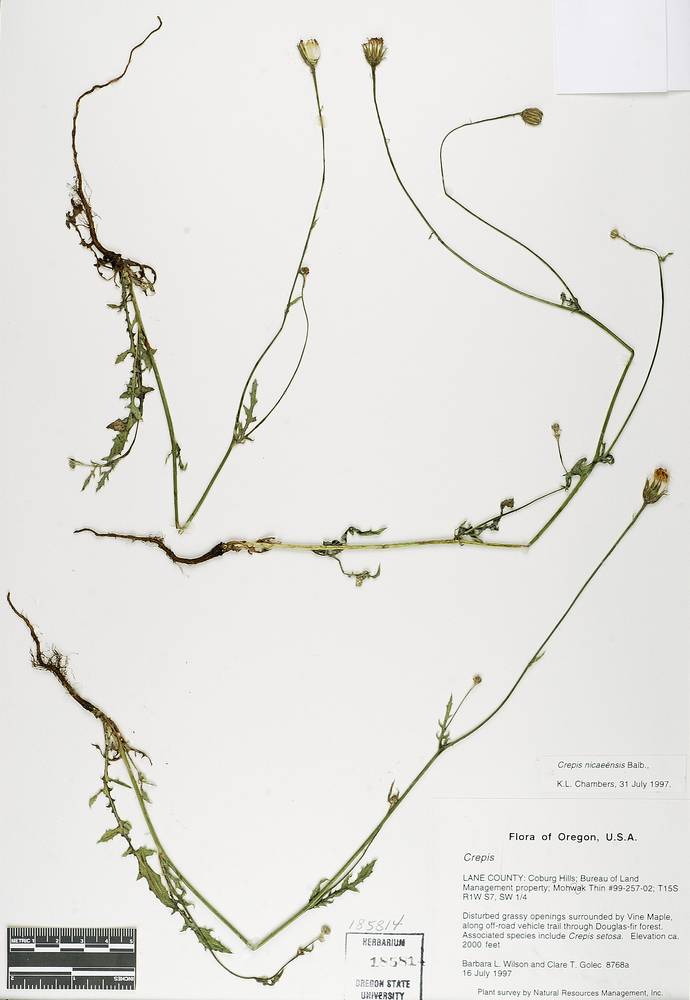
Plants annual or biennial, 25–110 cm; with slender taproots.
Stems erect, simple or branched, hispid-pubescent near bases and below heads.
Basal leaves narrowly oblanceolate or elliptic, 16–20 cm, margins usually toothed, deeply and irregularly lobed, tips obtuse, surfaces pubescent with straight or curled hairs; short-petiolate.
Cauline leaves similar to basal, reduced upwards; short-petiolate or sessile, sometimes clasping.
Inflorescences not flat-topped.
Heads 2–15.
Involucres campanulate, 8–10 mm.
Phyllaries outer linear; inner 10–15, lanceolate, glandular-hispid.
Florets 45–60; ligules 11 mm.
Fruits narrowed at tips, 2.5–4 mm, golden brown, 10-ribbed.
2n=8.
Disturbed, gravelly openings in coniferous forests. Flowering May–Jul. 200–1000 m. Casc. WA; sparsely scattered in North America; Europe. Exotic.
as described under Crepis nicaeensis
Annuals or biennials, 25-110 cm (taproots shallow). Stems usually 1, erect, branched from middles or distally, densely hispidulous proximally. Leaves basal and cauline. petiolate (petioles winged, bases clasping); blades oblance-olate, runcinate, 16-19 × 2-4 cm, margins pinnately lobed, dentate, or finely denticulate, apices obtuse, faces finely hispidulous (hairs yellowish. Heads 2-15, in corymbiform arrays. Calyculi of 7-9, linear, glabrous or glabrate bractlets 3-6 mm. Involucres campanulate, 8-10 × 4-6 mm. Phyllaries 10-15, lanceolate (strongly tapered), 7-8 mm (bases strongly keeled, partly enclosing marginal cypselae, margins scarious), apices obtuse (ciliate), abaxial faces glabrous or glabrate, adaxial glabrous. Florets 50-60; corollas yellow (sometimes reddish distally), 10-11 mm. Cypselae golden brown, fusiform, 2.5-4 mm, ribs 10 (broad); pappi bright white, 4-5 mm. 2n = 8.Flowering May-Aug. Waste places, meadows; 1400-1600 m; introduced; B.C.; Mass., Mich., Ohio, Vt., Wash.; Europe.Crepis nicaeënsis is distinguished by the annual or biennial habit, shallow root system, hispid stems, and glabrate phyllaries enclosing outer cypselae. It is similar in habit to C. biennis, which differs in its larger heads and 13-20-ribbed cypselae; it is considered closely related to C. capillaris (E. B. Babcock 1947).